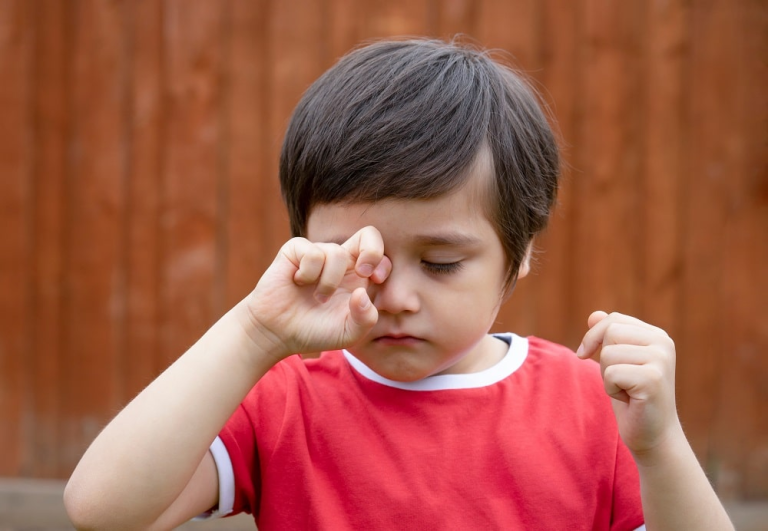Motor Restlessness in Babies: Causes, Symptoms, and Solutions

Ever noticed your little one squirming, kicking, and constantly moving? You’re not alone. Many parents watch their babies wiggle and wonder what’s happening.
Motor restlessness in babies is common but can leave parents scratching their heads. Is it normal? Should you worry? What can help?
This guide breaks down what causes those wiggly moments, how to spot different types of movement patterns, and simple solutions that actually work for both you and your baby.
Let’s make sense of those active little bodies together, because a calmer baby means a more relaxed you.
Understanding these movements helps you respond better to your baby’s needs. Sometimes, a change in routine or environment is all they need to settle down.
Motor Restlessness in Babies
Motor restlessness refers to a state in which a baby exhibits continuous or excessive movement, often appearing as if it cannot stay still.
Parents may notice their baby kicking their legs frequently, squirming in place, or constantly shifting their body.
This restlessness may occur at any time, whether the baby is awake or asleep, resulting in frequent movements, jerks, or tossing and turning.
It can be a normal part of development, especially during growth spurts or milestones like rolling or crawling.
However, if the restlessness interferes with sleep or daily routines, it may signal underlying discomfort or overstimulation.
Observing patterns and discussing concerns with a pediatrician can help determine if the behavior is typical or needs further attention.
Symptoms of Motor Restlessness

Restless babies can leave parents feeling puzzled and exhausted. Understanding what drives this squirmy behavior is the first step toward helping your little one and yourself find some peace.
- Increased Body Movement: Frequent leg kicking, arm waving, and squirming make it hard for babies to stay still, often signaling their need for attention or comfort.
- Difficulty Sleeping: Trouble relaxing and falling asleep, leading to disrupted naps and poor nighttime sleep as they struggle to settle down.
- Signs of Discomfort: Restless movements triggered by hunger, gas, teething, or even uncomfortable clothing – their way of telling you something’s bothering them.
- Change in Behavior Patterns: Increased restlessness following changes in environment, routine, or new experiences as babies process these shifts in their world.
Remember, restlessness is your baby’s language before they can speak. By recognizing these patterns, you’re already on your way to becoming an expert translator of your little one’s needs.
What Causes Motor Restlessness in Babies

Various factors, from developmental stages to environmental influences, can trigger motor restlessness in babies.
Understanding these causes helps parents better address and manage their baby’s restlessness.
1. Developmental Stages
Babies grow and develop constantly, and motor restlessness often signals the achievement of milestones.
As they improve muscle strength and motor skills, they may move more, kicking or squirming while exploring their abilities.
2. Hunger or Discomfort
Hunger, wetness, or discomfort are common causes of motor restlessness in babies. They may squirm or move to signal this.
Wet diapers, tight clothing, or an empty stomach can also make them restless as they communicate their needs.
3. Sleep Patterns
Babies may exhibit motor restlessness during sleep, particularly when transitioning between sleep cycles.
This normal behavior occurs as they move through light and deep sleep phases, leading to jerking or kicking their legs.
4. Overstimulation or Boredom
Babies’ restlessness can stem from either overstimulation or a lack of engagement.
Excess noise, bright lights, and too much interaction may lead to irritability and fidgeting, while insufficient stimulation causes them to seek new experiences.
Is Baby Moving Enough? Here’s How to Know for Sure
Keeping a log of your baby’s movements helps recognize normal patterns and detect anomalies.
Note when your baby is active, during feeding, before naps, or after stimuli. Over time, patterns can provide insight into their needs, comfort, or sources of restlessness.
This tracking can be simple. Keeping a quick daily journal or taking notes on your phone can help you identify trends or sudden changes.
Sharing these with your pediatrician can make consultations more productive, leading to faster reassurance or solutions.
Tracking also helps differentiate between playful activity and signs of discomfort. The more in tune you become with your baby’s rhythms, the more confident you’ll feel navigating restlessness.
Solutions to Manage Motor Restlessness

When your baby seems unable to settle down, these gentle strategies can work wonders to restore that peaceful calm.
1. Establishing a Soothing Routine: A consistent feeding, napping, and playtime routine can help babies feel more secure and settled, reducing restlessness. Predictable patterns give babies a sense of comfort and stability.
2. Comfort Measures: Techniques like gentle rocking, swaddling, or offering a pacifier can be effective in calming a restless baby. These methods provide comfort and help the baby feel more relaxed.
3. Creating a Calm Environment: Minimizing overstimulation by ensuring the baby’s surroundings are quiet and calm can help them relax. A soothing environment, especially during sleep times, promotes better rest and reduces fidgeting.
4. Massage and Movement Exercises: Gentle tummy massages or stretches can help babies feel more relaxed and relieve discomfort that may be causing restlessness. These exercises can also aid in digestion, helping to reduce gas and other discomforts.
Remember, every baby responds differently to calming techniques, so don’t get discouraged if the first method doesn’t work immediately.
How Sleeping and Feeding Impact Motor Restlessness
Sleep and feeding patterns play a significant role in your baby’s physical restlessness.
When babies are overtired or underfed, their bodies may react by becoming more active or fussy, which can often be mistaken for typical motor milestones or behavioral issues.
Inadequate sleep can lead to overstimulation, making it harder for babies to settle. They may kick, flail, or arch their backs as a way of releasing pent-up energy.
On the other hand, hunger or digestive discomfort (like reflux or gas) after feeding can also trigger twitchy movements or frequent waking.
Creating a consistent sleep routine and ensuring your baby is well-fed and burped can reduce unnecessary restlessness and promote calmer, more controlled motor development.
Conclusion
Every wiggle, kick, and restless moment tells a story in your baby’s development. While motor restlessness can be concerning, remember that it’s often just your little one exploring their growing abilities or communicating needs.
By paying attention to sleep routines, creating a calm environment, and responding with gentle techniques, you’re already giving your baby exactly what they need to feel secure.
Trust your parenting instincts; you know your baby best. If concerns persist, your pediatrician is there to help guide you through this trip. What techniques have worked for calming your restless baby?
Share your experiences in the comments below, and check out our other articles on baby development milestones for more helpful tips!






